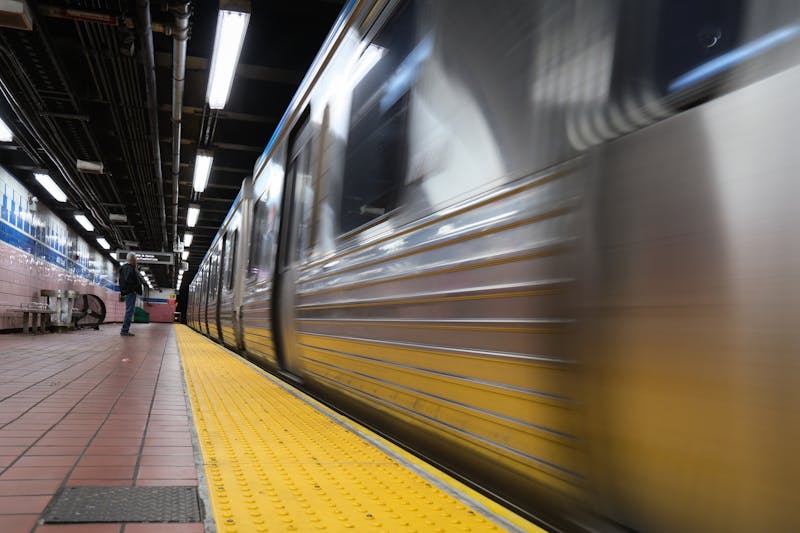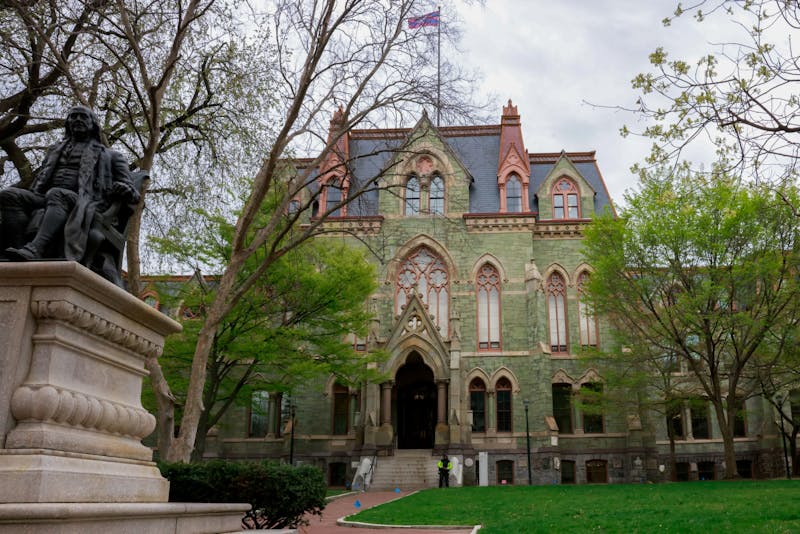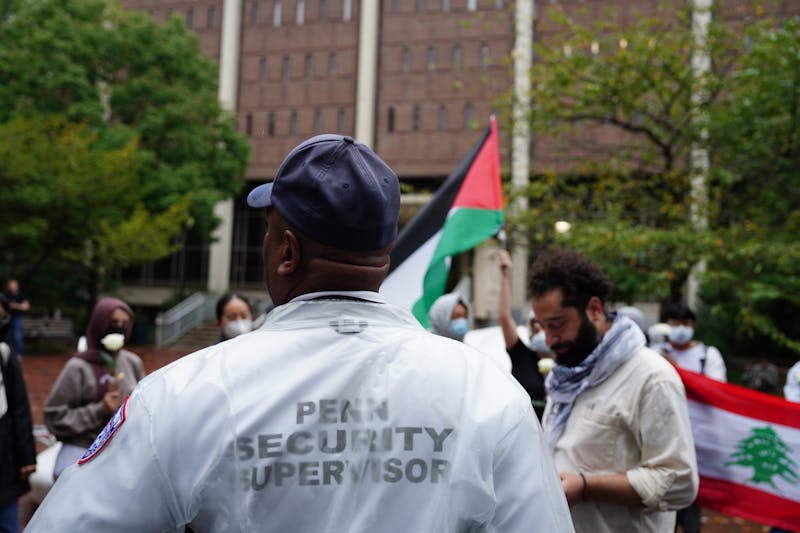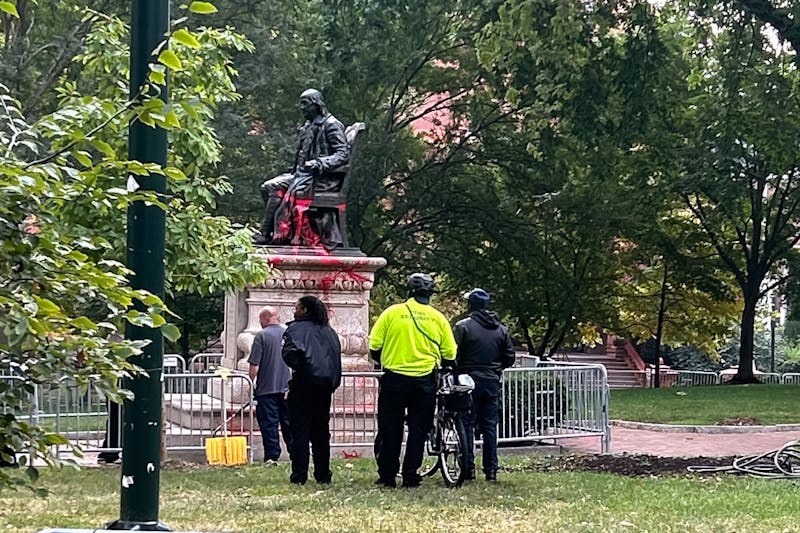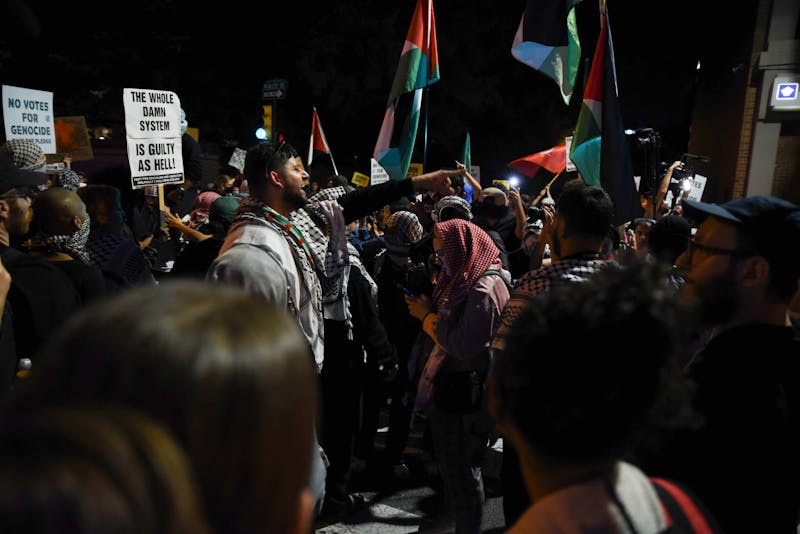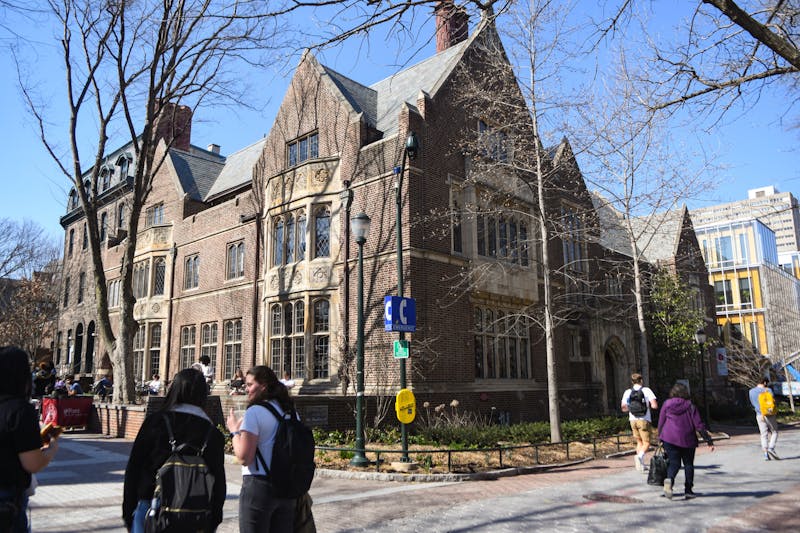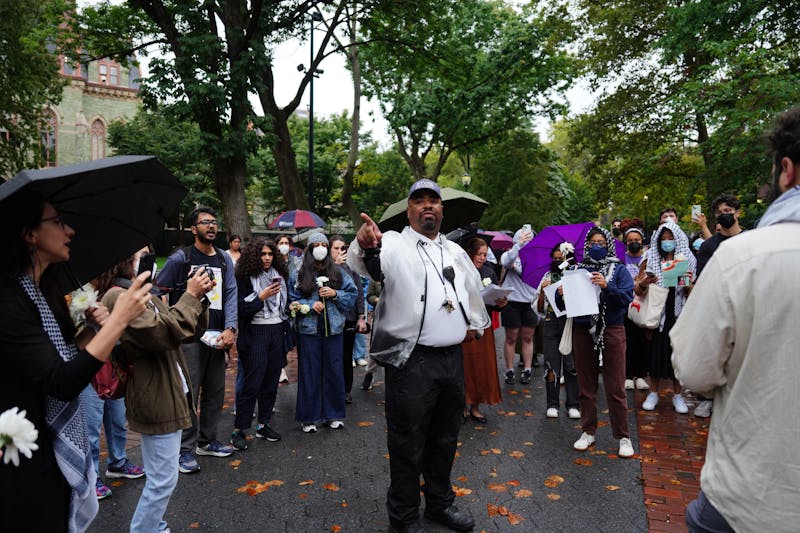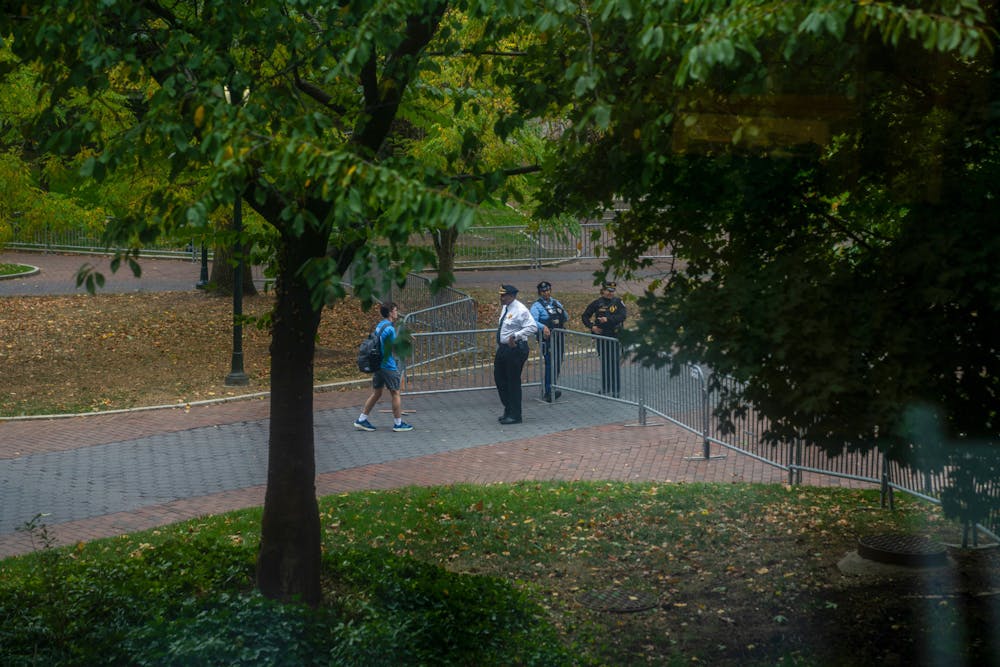
Penn students said that they experienced a number of inconveniences when the University increased police presence and diverted foot traffic on Locust Walk during a vigil near campus on Monday afternoon.
The students expressed concern over the University’s response to the “Indigenous Peoples Day Palestine Solidarity Vigil,” which mourned lives lost in the Middle East and drew over 250 people to the intersection of 34th and Walnut streets. As the vigil began, Penn and Philadelphia police officers rerouted traffic from the two streets and barricaded sections of College Green and Locust Walk, forcing students to take detours as they attempted to traverse a central part of campus.
Multiple students who spoke with The Daily Pennsylvanian expressed concern over the increased police presence and its disruptive effect on campus. A University spokesperson did not respond to a request for comment.
The vigil included speeches, moments of silence, and homages to Palestinian, Lebanese, and Syrian lives. In an Instagram post, Penn Faculty for Justice in Palestine called on attendees to “stand united against genocide and oppression, from Lenapehoking to Palestine” in a “collective act of solidarity.”
Penn first sent a UPennAlert at 3:37 p.m. notifying the campus community of a “scheduled demonstration” that was “restricting traffic flow in the intersection” of 34th and Walnut streets. Throughout the vigil, Penn security officers redirected students from the area of Locust Walk next to Van Pelt-Dietrich Library to a separate entrance, where students could enter with a Penn ID.
“The barricading has made Houston Hall and Van Pelt almost inaccessible and is causing major inconveniences to many students, including myself,” College sophomore Isa Turri told the DP.
A College student — who was granted anonymity for fear of retaliation — said that they were late to a meeting as a result of the University’s response to the vigil. They noted recent security measures implemented by Penn on College Green, which they said has been “constantly under surveillance, fenced, [with] increased police presence, and is blocked during protests nearby.”
Penn has erected and dismantled scores of barricades around College Green and the surrounding area throughout the semester — with fencing at times surrounding structures like the Ben Franklin statue and the LOVE statue, forming a perimeter around green space, and blocking off Locust Walk.
“Even peaceful protests that express support for a particular side get shut down immediately or even in advance,” the student said. “It makes any type of involvement that doesn’t align with the interests of [Penn] donors seem violent, inherently offensive, and wrong.”
They said that the University’s response to campus activism was “dangerous for keeping a healthy discourse that the university pretends to strive for” and contributed to the impression that “an entire racial and ethnic group or their supporters” were “violent and dangerous.”
College senior Alex Howe said he was “baffled” by the increased police presence for what he described as an “unassuming” gathering of people as he walked from David Rittenhouse Laboratory past Hill College House.
“It just seemed like a large police presence without any warning. And I can only imagine how annoying that would be if I had a class or something,” Howe said.
The University sent four UPennAlerts throughout the course of the demonstration. The first three included descriptions of restricted traffic, and the last one sent an “All Clear” message at 5:48 p.m.
Howe noted that the notifications from the University through the UPennAlert system “came much later than the police presence itself was set up.” He also said that he felt the language used in the messages characterized the demonstration as “disruptive and annoying.”
A College sophomore, who was granted anonymity for their concerns about professional consequences, said that shutting down Locust Walk was an “overblown” measure. They noted that increased police presence on campus “for a peaceful demonstration implies a sense of escalation where there really is none.” The student stated that had officers not been in the area, they would have “barely noticed” the demonstration on their way to class.
“A lot of the police presence shows Penn donors that Penn wants to stand on a specific side of a conflict in which they have no business asserting themselves,” the student said. “There’s no need for an institution like this to have such a measurable affiliation to one side of this war.”
The student said that the University was concerned about losing support from donors and was thus being forced to take a differing response to pro-Palestinian versus pro-Israeli protests, compromising Penn’s stated position of neutrality. Penn’s temporary open expression guidelines, established this summer, call for registration of events at locations such as the Split Button and Locust Walk to occur two weeks in advance.
The Daily Pennsylvanian is an independent, student-run newspaper. Please consider making a donation to support the coverage that shapes the University. Your generosity ensures a future of strong journalism at Penn.
Donate




